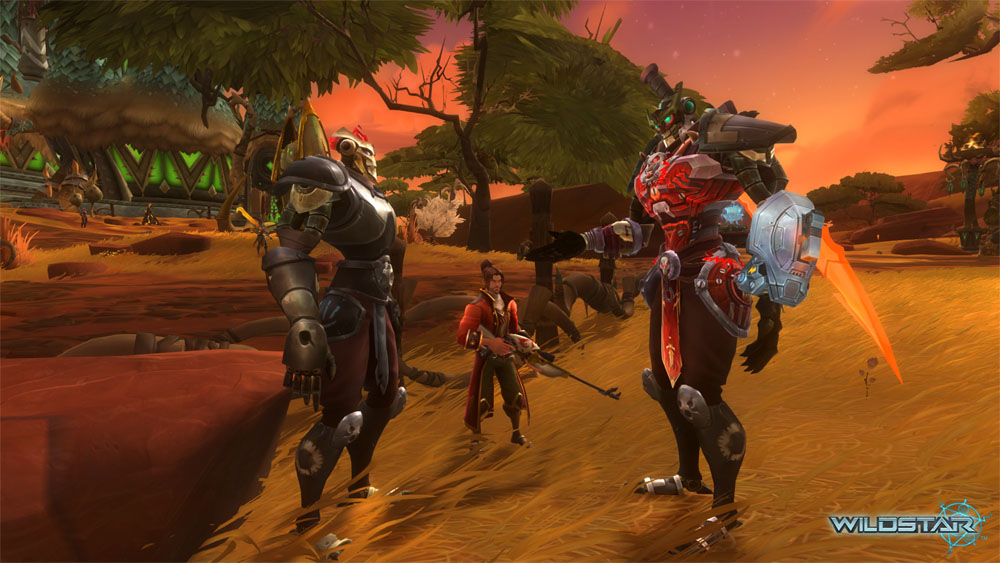Back in February, I did Part I of my impressions of Wildstar from an MMO Co-Opportunities point of view. It’s June now, and the game officially launched two weeks ago. What does that mean? It’s time for Part II!
In Part I, we looked at some of the social aspects of Wildstar, such as grouping up, mentoring, and circles. This time, we’ll focus on grouping for the content in the game, both open world content for questing and instanced content. My main character is level 26 at the time of writing (max level being 50), so my impressions will be focused on the early-mid game. I’ve done a handful of shiphand missions, a couple of adventures, a couple of dungeons, one expedition, and lots and lots of questing almost exclusively with 3-4 other people.

Open World Content: Questing (Class level and Path level)
In some MMOs it’s difficult to do any quests without others. In others, it’s almost considered a disadvantage to group up with other people to do quests. Wildstar strikes a happy balance, with most quests being able to be completed solo, yet often times providing benefits to grouping together. Quests that are not expected to be completed solo are usually clearly marked with a [GROUP] tag. Wildstar has two primary leveling systems: class level and path level. Class level is the normal, expected character leveling system. Path level, on the other hand, provides characters with a new set of quests (called missions) that they can complete to level their path. Path level ups unlock utility skills (e.g. summoning a mailbox, creating a portal to the capital, etc.), path-themed costume items, housing items, and larger bags. A player’s path will also enable them to interact with some aspects of the environment in the world (e.g. opening a hidden tunnel).
Often, grouping for class leveling can be advantageous. A lot of the time, credit for the quest is shared between party members. A similar mindset was also applied to path leveling. Much of the time, if a character helps someone else with one of their path missions, they will also receive some path XP. Even neater are the times when paths interact with each other. Sometimes a certain path will be able to interact with an object which brings it to a new state. That new state may require a different path to interact with it for yet another change to occur. For example, there are broken bots in the world that Settlers can interact with to put them back together. From this state, a scientist can power them up. The bot will stand up and drill into the ground, producing resources that Settlers need to do their path missions. It’s little touches like this that make me inexplicably delighted.
